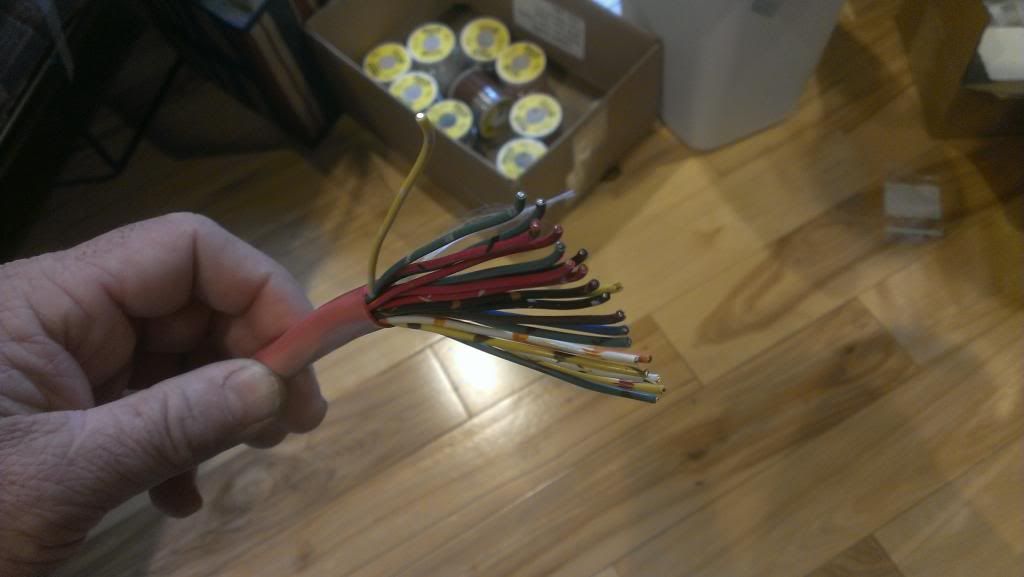
 |
|
#131
|
|||||
|
|||||
|
Well, I had a good talk with an electrician that I use and he helped me wade through some of the dilemma's I've had. He's not a electronics guy, just a sparky who does house and commercial wiring but his code book pointed us in the direction I think I needed. Turns out a 18AWG wire all by itself in the open air can carry 10A but it's de-rated once it's bundled with a bunch of others. The ratio of decreased carrying capacity depends on how many wires it's run with. But according to our math 18AWG should be fine for what I'm doing. And as it turns out he had a roll of 18/21 sitting in his shop he gave me for $2/ft. It is fire alarm wiring.
 And I also got some other goodies in the mail yesterday. Now all I have to do is figure out how it works   |
|
#132
|
|||||
|
|||||
|
Hey Chris,
I'm finally looking at setting up my PWM fans on my heatsinks and I have a couple questions about that schematic you posted up earlier. In there you have 1K resistors, a 10K resistor, 1N4148 diodes, a BC547 transistor and 2N3904 transistors. How flexible are those? The reason I ask is I don't have most of them, lol. I have what Jamie posted in the instructions. 1N4001 diodes, BC549C transistors and 1K and 10K resistors. |
|
#133
|
||||
|
||||
|
Man, that circuit confused the **** out of me for a few minutes there until I realized what they were doing. Funny enough it's the same way those LDD drivers dim
You should be fine Dom. The BC549c and BC547 are basically direct substitutes. The difference between your diodes and his are his are fast recovery diodes, while yours are general purpose. I'd have to go back and look again I think the diodes are just being used as protection in case there is any inductance from the fans. I think the general purpose should be fine because you aren't doing any high-frequency switching. |
|
#134
|
||||
|
||||
|
Quote:
Send me a close up digital picture of the header pins for input. I just received mine last week but the 4 relay version. The relay modules are opto-iso which will require the pin to be tied to gnd to latch. From what I've found out over the last week, the opto-iso is not compatible with the Jarduino. Simply put........the relay board latches on GND but eventually becomes inconsistent also latching on 3.3 to 5VDC. |
|
#135
|
|||||
|
|||||
|
Ya, I was actually just reading something about that on the jarduino thread on UKreefs. But I admit I'm not sure what all that means or what to look for for a proper relay board
 Give me a sec and I'll post the pic. |
|
#136
|
|||||
|
|||||
|
|
|
#137
|
|||||
|
|||||
|
If anyone is interested, I'll probably be making a custom order for the 4-LDD pcb boards with the pull down resistor jumper that rrasco made on the RC thread. PM me if you interested in any of the boards...
|
|
#138
|
|||||
|
|||||
|
Quote:
|
|
#139
|
||||
|
||||
|
Quote:
New LEDs for the main tank coming it the summer! Whoooo! |
|
#140
|
||||
|
||||
|
Quote:
GND - ground IN1 to IN8 - Arduino outputs Take a jumper, connect to GND and to any of the IN1 to IN8 inputs. You should hear the relay latch. |